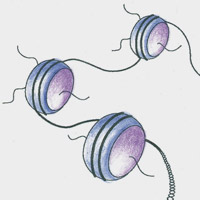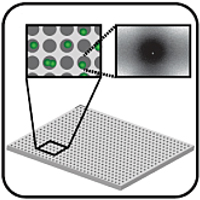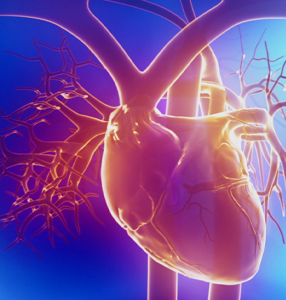Top 5 considerations when automating single-cell sequencing
 The realization that bulk analyses drown out the unique genomic signatures of rare cell subpopulations—often a critical driving force in the phenomenon being studied—has made single-cell analysis increasingly necessary. The field, however, is still in its infancy, so scientists navigating these experiments must carefully evaluate the techniques and technologies they use for their experimentation.
The realization that bulk analyses drown out the unique genomic signatures of rare cell subpopulations—often a critical driving force in the phenomenon being studied—has made single-cell analysis increasingly necessary. The field, however, is still in its infancy, so scientists navigating these experiments must carefully evaluate the techniques and technologies they use for their experimentation.
In recent years, several automation systems have emerged that enable processing of large numbers of single cells. Given that single-cell biology requires large sample sizes in order to make significant statistical conclusions, a key consideration is how many cells the platform can process. While cell throughput is important, it is not necessarily the most crucial consideration, since the number of cells required depends on the complexity of the sample and the sensitivity of the system (Haque et al. 2017).
When considering single-cell automation systems, you should certainly look for a cell throughput that matches your experimental goals, but there are additional parameters that can influence your confidence in the data produced. Open-platform systems allow you to more easily do the experiments you want, and you can trust that your results are a more accurate reflection of biological variation when systems have the ability to include positive and negative controls. Batch effects are problematic and can confound the data, so systems that reduce batch effects are desirable. The ability to image samples lets you tie sequencing data back to each cell. Finally, an end-to-end solution ensures that you are supported from sample prep through data analysis.

Open platform
Research projects need to continually evolve to include new chemistries and sample types, and to ask different questions as new evidence emerges. One major limitation scientists may face is that some systems accommodate a limited range of cell or sample types due to size-isolation constraints of the system. Additionally, some systems may only be compatible with certain sequencing formats. However, the type of sequencing that needs to be performed should be dictated by the biological question at hand, not by the capabilities of the automation system. Finding a system that can adapt to your needs by accommodating a range of cell types and sequencing chemistries enables you to design your own workflow and answer the questions you want to ask.
Ability to perform positive and negative controls
A hallmark of good science and experimental design is running positive and negative controls alongside your samples. Without their inclusion, troubleshooting experiments becomes impossible. Positive controls can confirm that the experimental setup is correct, while negative controls help identify potential contamination that can skew the data. Additionally, negative controls provide a means to determine how much background is being contributed to the data by the experimental system. In an scRNA-seq experiment, the no-cell negative control may show some number of read counts for the gene being analyzed, and this represents the noise in the single-cell automation system. This value can then be set as a confidence threshold for the experimental samples, such that any calls with read counts below this level are excluded from the analysis because they do not represent a true signal.

Reduction of batch effects
The large number of cells required for meaningful single-cell analysis can be a major drawback, since experimentation at this scale is highly susceptible to batch effects. Batch effects are technical sources of variation (e.g., using different lots of reagents for different runs, running experimental groups on different days, having multiple scientists process different runs of an experiment, etc.) that can confound the analysis of biological data. Having the ability to process various experimental groups in parallel during the same run is one key strategy to help minimize the introduction of nonbiological variations. If possible, it is best when the parallel processing also includes biological replicates for each sample group.
Ability to image cells
Integrated imaging allows the identification of true single-cell samples to ensure that the data is not biased by the inclusion of non-single-cell-containing samples such as doublets or empty wells. Even with the most sophisticated single-cell isolation techniques, obtaining 100% single cells is impossible, and probability dictates that some samples will have no cells and others will have multiple cells. Furthermore, a system compatible with fluorescence detection can be used to assess the viability of any identified single-cell samples so that dead cells can be identified and excluded from analysis. Your analysis can be made even more powerful when the sequencing data for the processed cells can be tied back to the imaging data for each sample.
End-to-end solution
Beyond looking at the system itself, you should also consider what type of support the system's manufacturer can provide. Do they provide just the hardware, or can they also support your sample prep needs? Does the manufacturer provide software solutions to aid in data analysis? Having end-to-end support can dramatically increase the speed of your research project.
Want more information on what to look for in a single-cell automation system? Check out our post, What's inside automated single-cell RNA-seq platforms, detailing the findings of a comprehensive comparison study of the major single-cell RNA-seq platforms and methods performed by the Association of Biomolecular Resource Facilities Genome Research Group.
References
Haque, A., Engel, J., Teichmann, S. A. & Lönnberg, T. A practical guide to single-cell RNA-sequencing for biomedical research and clinical applications. Genome Med. 9, 75 (2017).
ICELL8 Innovators Series
Bringing epigenomic profiling to the single-cell biology stage
Discover how researchers developed the new CUT&Tag method for single-cell profiling of chromatin components with ICELL8 technology.
Accelerating chromatin mapping with single-cell ATAC-seq
Learn more about how researchers used our ICELL8 Single-Cell System to develop a novel single-cell ATAC-seq workflow.
Exploring transcriptional variation in cardiomyocytes
Discover how researchers used the ICELL8 Single-Cell System to perform scRNA-seq on fragile adult cardiomyocytes.
Takara Bio USA, Inc.
United States/Canada: +1.800.662.2566 • Asia Pacific: +1.650.919.7300 • Europe: +33.(0)1.3904.6880 • Japan: +81.(0)77.565.6999
FOR RESEARCH USE ONLY. NOT FOR USE IN DIAGNOSTIC PROCEDURES. © 2025 Takara Bio Inc. All Rights Reserved. All trademarks are the property of Takara Bio Inc. or its affiliate(s) in the U.S. and/or other countries or their respective owners. Certain trademarks may not be registered in all jurisdictions. Additional product, intellectual property, and restricted use information is available at takarabio.com.







